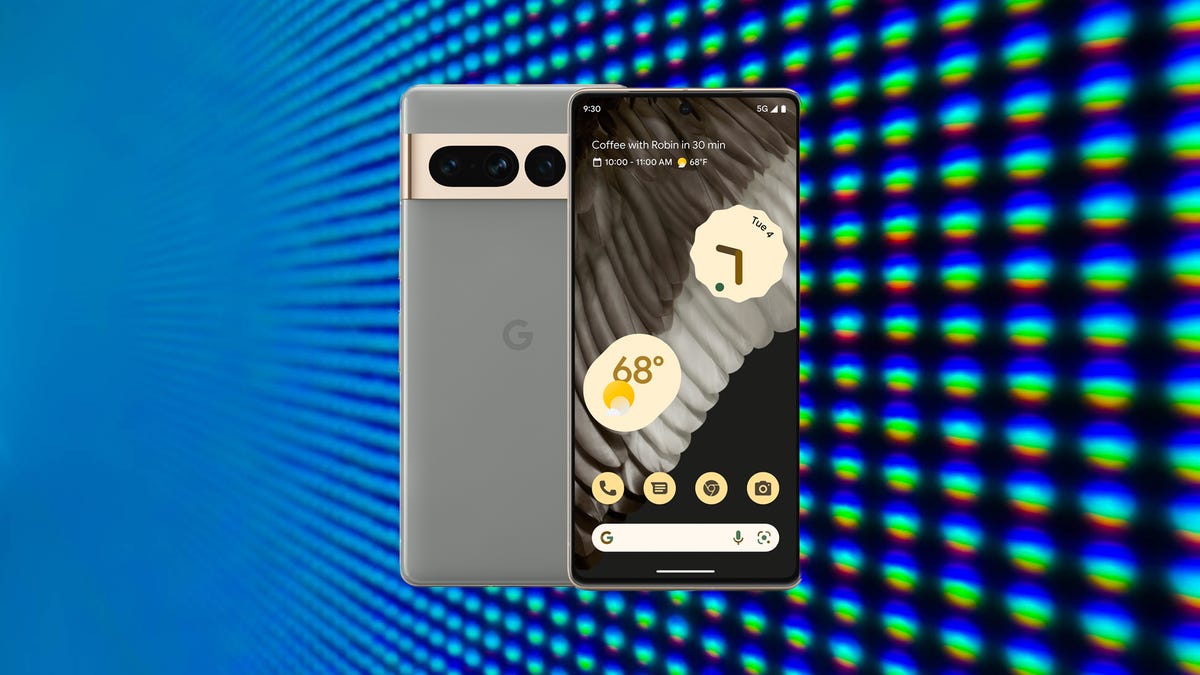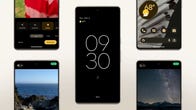Google just announced the Pixel 7 Pro, its new high-end phone. Like its predecessor, the Pixel 7 Pro primarily stands out for its more sophisticated camera and larger screen compared to the standard $599 Pixel 7, which was also unveiled Thursday. The Pixel 7 Pro starts at $899, just like last year’s Pixel 6 Pro, and goes on sale Oct. 13, with preorders for both the Pixel 7 and 7 Pro starting immediately.
The announcement came during Google’s fall product launch event on Thursday, during which the company also announced the Pixel Watch. Google previewed all three products in May, but only revealed more details about their pricing, availability and features during Thursday’s event. Both phones run on Google’s new Tensor G2 chip and have a slightly updated design with a more prominent metal camera bar on the back. Google has also made improvements to the zoom on both phones’ cameras, but only the Pixel 7 Pro has a dedicated 48-megapixel telephoto lens and supports macro photography.
The Pixel 7 and 7 Pro are part of Google’s ongoing efforts to compete against Samsung and Apple, which rule the global smartphone market. The new phones also signal Google’s approach in doing so, which boils down to undercutting its competitors’ prices, focusing on camera quality and developing exclusive software features for its phones.
Preorder Google’s top-of-the-range Pixel 7 Pro from $899. The device will be released Oct. 13. Get up to $750 off with trade-in and $200 in Google Store credit.
Google 7 Pro gets better camera zoom and macro mode

A close up of the Pixel 7 Pro’s camera
Zoom quality is one of the biggest areas Google chose to improve when it comes to the Pixel 7 and 7 Pro’s camera. The Pixel 7 Pro has a 5x optical zoom compared with last year’s 4x, along with other zoom tricks too.
Both the Pixel 7 and 7 Pro’s main 50-megapixel camera can crop in for 2x zoom view and a 12.5-megapixel resolution photo, Google claims. That’s exactly what Apple did with its iPhone 14 Pro.
Google uses the same idea with the Pixel 7 Pro’s dedicated 48-megapixel telephoto camera. It ordinarily shoots at 5x zoom, but cropping the central pixels from the frame produces a 10x view and a 12-megapixel photo.
When you’re zooming between 2.5x and 5x, the Pixel 7 Pro will fuse data from the main and telephoto cameras. That enables it to blend in detail from the telephoto and main cameras for better image quality than digital zoom alone would provide, Google said.
The Pixel 7 Pro can also zoom in at up to 30x digitally, compared with the Pixel 6 Pro‘s 20x digital zoom. That’s a longer reach than the iPhone 14 Pro’s maximum of 15x, but won’t magnify distant subjects as much as the Galaxy S22 Ultra’s 100x digital zoom.
The Pixel 7 Pro is getting another extra camera feature missing from the Pixel 7: macro photography mode, courtesy of the ultrawide camera’s autofocus. The camera kicks into this mode automatically when you’re setting up a macro shot, but you can also turn it off by tapping a symbol on the screen in the camera.
The company says that both phones will also be able to take photos more quickly in darker, night settings (what it calls “Night Sight”) thanks to Google’s new Tensor G2 chip. In a demo, Google showcased how the Pixel 7 Pro was able to capture a Night Sight image in 1.25 seconds, while the Pixel 6 Pro took 5.25 seconds to take the same shot. That’s a big deal because night mode photos — across all phones, not just Google’s — generally take a longer time to process during capture. That can make it hard to hold the camera still, sometimes resulting in blurry or unfocused images.
Google’s new Pixel phones will also have a new feature meant to make your old photos look better, too. Photo Unblur leverages the Tensor G2 processor to sharpen blurry photos that may have been taken on an older camera. You’ll be able to access this feature on either phone in the edit menu in the photos app.
With the Pixel 7 and 7 Pro, Google also wants to make it easier for people who are visually impaired or that have low vision to take selfies. With Guided Frame, the Pixel 7 or 7 Pro can verbally direct you on how to position your phone in order to capture a good selfie. The feature comes as Apple has also been coming up with new ways to leverage the sensors inside the iPhone to help the visually impaired. Apple’s Pro iPhones, for example, can help the visually impaired detect people and locate nearby doors by using their lidar sensors.
As for video, the Pixel 7 and 7 Pro will both be getting a new Cinematic Blur mode that’s essentially portrait mode for video. That might sound familiar to iPhone users since Apple added a very similar feature last year starting with the iPhone 13. Like other high-end phones, the Pixel 7 and 7 Pro are also getting improved video stabilization.
Google Pixel 7 Pro design and other details

Google’s Pixel 7 Pro in hazel
The Pixel 7 and 7 Pro each have a slightly updated version of the design that Google introduced with the Pixel 6 and 6 Pro. Both phones have a new camera bar that’s made from metal, giving it a more distinct look than before. The Pixel 7 Pro’s color options include obsidian (black), snow (white) and hazel (a grayish green).
Once again, screen size is one of the biggest distinguishing factors between both devices. The Pixel 7 Pro has a 6.7-inch screen that’s about the same size as the iPhone 14 Pro Max and just slightly smaller than the 6.8-inch Galaxy S22 Ultra. As was the case with the Pixel 6 Pro, the Pixel 7 Pro’s display can boost its refresh rate up to 120Hz. The Pixel 7, by comparison, has a 6.3-inch display and can only increase its refresh rate to 90Hz.
Google is also adding face unlock to both new Pixel phones, a feature that was noticeably missing from the Pixel 6 and 6 Pro. But Google advises using the under display fingerprint scanner found on both phones or a PIN for matters that require additional security, like authenticating payments. The face unlock feature is mostly meant for convenience, according to Google.
The Pixel 7 Pro will have 12GB of RAM compared to the Pixel 7’s 8GB, which should help boost performance when multitasking and general performance. It’ll be available in 128GB, 256GB or 512GB storage options.
Both phones support 5G across AT&T, Verizon, T-Mobile and unlocked models. But for T-Mobile, only the Pixel 7 Pro will support super-fast millimeter wave 5G. Google claims both Pixel phones should last for more than 24 hours on a single charge and up to 72 hours with Extreme Battery Saver mode turned on. Just like last year’s Pixel 6 and 6 Pro, both phones will support wireless charging and can replenish their batteries up to 50% in 30 minutes through wired charging. But you’ll have to use Google’s 30-watt adapter, which is sold separately, to get those speeds.
The phones will get five years of security support and three years of Android OS upgrades, which is one year shy of Samsung’s pledge to support four years of Android version updates on its recent phones. As one would expect, the phones will ship with Android 13, the latest version of Google’s software.
Google Pixel 7 Pro early thoughts

A closeup shot of the Pixel 7 Pro in hazel
The Pixel 7 Pro seems like a minor upgrade over last year’s Pixel 6 Pro, but it will likely feel like a noteworthy upgrade for those coming from a Pixel phone that’s at least two years old. It also shows that Google is still focusing on the camera as being the primary differentiator between its premium and regular flagship smartphones. Apple and Samsung, meanwhile, have found other ways to distinguish their “pro” phones from their less expensive models, through the iPhone 14 Pro’s Dynamic Island and the Galaxy S22 Ultra’s S Pen.
We’ll have to wait until we test the Pixel 7 Pro to know whether it’s worth the upgrade from an earlier model.


